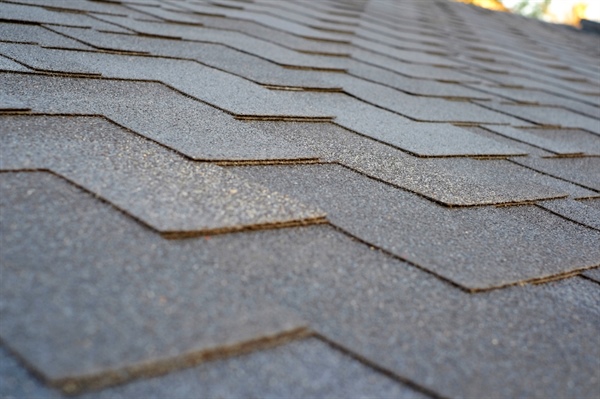Winter Maintenance Tips for Asphalt Shingle Roofs in Minneapolis

Minnesota winters can be tough on asphalt shingle roofs, with heavy snow, ice, and freezing temperatures all posing potential risks. Homeowners in Wayzata and across the Minneapolis area need to take special care to ensure their roofs can withstand these challenging conditions.
One critical aspect of winter roof care is understanding how to safely remove snow without damaging your shingles. Too much snow accumulation can also lead to problems like ice dams and excess weight on your roof. Routine inspections of your shingles during winter can also help you spot issues early on, ensuring that any necessary repairs are manageable and timely.
Proper winter maintenance is key to extending the life of your asphalt shingles and avoiding costly repairs. Below, we'll explore some essential tips to help you maintain your roof through the harsh winter months!
How to Safely Remove Snow from an Asphalt Shingle Roof
Removing snow from your roof requires careful planning and the right tools to avoid damaging your shingles. Over time, excessive snow can create ice dams, which can cause water to back up under the shingles, leading to leaks. For asphalt shingles, it's important to use a roof rake with a long handle, allowing you to clear snow from the ground without having to climb onto the roof.
When using a roof rake, be sure to move the tool in a downward motion, starting from the top and working your way down. Avoid scraping directly against the shingles to prevent loosening or breaking them. If your roof has a steep pitch, consider hiring a professional for snow removal to minimize the risk of accidents.
In areas with frequent snow, taking early action to clear small accumulations can prevent larger, harder-to-remove snow loads later on. Remember, when it comes to protecting your roof, preventive snow removal is key.
What Are the Best Practices for Inspecting Shingles During Winter?
Winter can make shingle inspections challenging, but it's essential for spotting issues before they worsen. Start by looking for obvious signs of damage, such as cracked or curled shingles. If you're inspecting your roof from the ground, binoculars can help you spot trouble areas without risking a fall.
Pay close attention to areas around the roof's edges and any valleys, as these spots are particularly vulnerable to winter weather. Look for signs of ice buildup or shingle discoloration, which may indicate moisture problems. For a more detailed inspection, a professional roofing contractor can safely check areas that are hard to see from the ground.
Even minor issues can escalate quickly in winter, so early detection is crucial. Make it a habit to inspect your roof after major storms and throughout the colder months to stay ahead of potential problems. For professional inspection services, consider contacting a Wayzata roofing contractor for a thorough winter roof check-up.
How to Handle Minor Shingle Repairs During Cold Weather
Cold weather can make shingle repairs more difficult, as asphalt shingles become less flexible and more prone to cracking. However, small repairs can still be done, provided you use the right tools and materials. A heat gun can help warm up the shingles, making them more pliable for repairs.
For minor cracks or holes, roofing cement can be applied, but make sure it's rated for use in low temperatures. If a shingle is broken beyond repair, replacing it as soon as possible will help prevent water intrusion. Be sure to always prioritize safety by using a sturdy ladder and avoiding roof repairs on icy days.
What Types of Winter Sealants Work Best for Shingle Maintenance?
Sealants are a great way to reinforce the integrity of your asphalt shingles, especially during winter. When choosing a sealant, opt for products specifically designed for cold weather, as these will adhere better and offer greater protection against moisture.
Polyurethane sealants are highly effective for winter roof maintenance, as they are durable and flexible enough to handle the expansion and contraction that occurs with temperature changes. Another option is silicone-based sealants, which provide a strong waterproof barrier and remain stable in low temperatures.
To ensure optimal results, apply sealant on dry days with temperatures above freezing, as this helps the sealant cure properly. For long-lasting protection, winter-grade sealants are a wise investment to keep your shingles secure throughout the season.
How Can You Protect Your Shingles from Ice Damage?
Ice buildup can lead to serious issues like ice dams, which force water under the shingles and into the roof structure. To protect your shingles, start by improving attic ventilation and insulation to prevent heat from escaping and melting the snow on your roof.
Installing ice and water shield membranes along the edges of your roof provides an extra layer of protection against ice dams. These membranes help prevent water from seeping under the shingles by forming a watertight barrier. Finally, always consider using heat cables to melt ice and allow proper drainage in problematic areas.
Winterize Your Home With Allied Construction!
By following these winter maintenance tips, you can help safeguard your asphalt shingle roof against the harsh Minneapolis winter. For those in need of additional protection, Allied Construction offers solutions tailored to winter roofing challenges!
Whether it’s removing snow, inspecting shingles, or choosing the right sealants, we'll help you take the right steps now that can save you significant time and money in the long run. Schedule a free home inspection today and keep your home protected all winter long! Give us a call at 952-737-8496 or reach out online for your questions in mind.